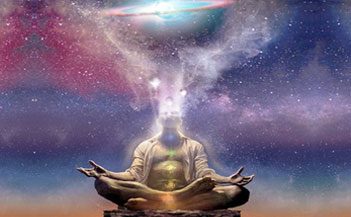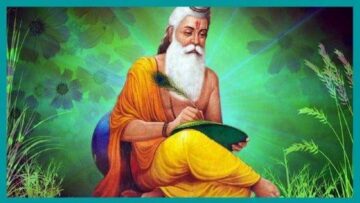Introduction to meditation
Meditation is a practice aimed at exploring the mind and finally transcending it (Saraswati, 1974). Various types of meditations have been broadly categorized into two categories, the focused attention type, and the open monitoring type. Focused attention meditation is characterized by gathering attention and directing it towards a particular object (e.g. mantra, concentration meditation).
On the other hand, open-monitoring meditation is described as a moment to moment monitoring of the content of one’s experiences with equal mindedness, like Vipashyana meditation (Lutz et al., 2008). Another type was added by Travis and Shear (2010), as automatic self-transcending meditation, where one supposedly transcends the process of meditation, such as it happens in Transcendental Meditation.
Although currently, this categorization lacks complete consensus amongst scholars, it offers a useful perspective in better understanding the varieties of meditations.
Vipashyana meditation
The practice of Vipashyana in Buddhism is rooted in Ānāpānasati and Satipaṭṭhāna sutta and is central to its 8-fold system. In his discourse on Satipaṭṭhāna-sutta Sutra, Acharya Goenka (1999) has defined Vipashyana as “observing reality in its true characteristic” after removing what he considers the ‘apparent reality’.
In Pali, sati means awareness and is about witnessing the realities of mind and body. However, it becomes satipatthana, another term for vipashyana, only when this awareness is established in wisdom/ panna (sati + panna = satipatthana), which comes with ‘understanding the nature of reality at experiential level’. Such wisdom is tied with knowing that everything is impermanent/ aniccha, and when we get attached to this impermanent reality, it leads to suffering/ dukkha (Acharya Goenka, 2008).
In the ancient texts, Vipashyana is closely associated with sati (awareness, memory), dhyana (focus), jnana (insight) and samatha (equanimity). As one keeps noticing the sensations in the body and ‘dividing, dissecting, disintegrating them’ one reaches the experience of body being nothing, but sub-atomic particles (bhanga).
Similarly, as one keeps noticing the mind, its contents such as emotions, turn into impermanent wavelets. All these experiences of impermanence in one’s body and mind finally leads to an insight about there being no ‘I’/ anatta. Thus, there are three insights about the nature of reality – impermanence, suffering and no-self, which together leads to satipatthana (Acharya Goenka, 1999).
Vipasyana is further supported by the practice of ethics (sila), which helps in transforming the afflictions of greed, anger and delusion, into beneficial qualities of generosity, compassion, and wisdom (Monteiro, Musten & Compson 2014). It also goes hand in hand with samatha meditation, for calming the mind. This is a concentrative/ focused attention type of meditation, where attention is focused on a variety of objects (most often on breathing).
The advanced stages of the 9-step samatha practice, seems to be similar to dharana-dhyana-samadhi of Patanjali’s astang yoga. And it differs from Vipasyana even when both techniques attend to breath, since in samatha practice the attention is focused on incoming/ outgoing of breath, while in vipashyana practice one notices the bodily sensations (e.g. heat, cold, rising, falling etc.) and mental phenomenon associated with breath, leading to insight into the nature of reality.
Mindfulness meditation / Vipashyana in modern times
Mindfulness meditation is the name given to the modern modifications and applications of Vipashyana meditation over the last 30 years, primarily to deal with stress and to increase well-being. This movement traces its roots to 17th century Burmese Theravada Buddhist tradition, although it is also influenced by Mahayana school of Buddhism.
One of the pioneers of this approach is Jon Kabbat Zinn, who defined mindfulness meditation as, “the awareness that emerges through paying attention on purpose, in the present moment, and nonjudgmentally to the unfolding of experience moment by moment” (Kabat-Zinn, 2003). Zinn emphasized the two components of mindfulness; awareness and nonjudgmental acceptance.
Another commonly accepted model is that of five-facets, which considers 5 components of mindfulness; openness to novelty, alertness to distinction, sensitivity to differing contexts, implicit awareness of multiple perspectives, and an orientation to the present (Langer, 1997).
Over the years various scholars have tried to understand mindfulness using other psychological constructs. An overview of the literature informs that majority of the descriptions of mindfulness in the field of psychology emphasizes attention, awareness (ongoing monitoring of body, mind, thoughts, feelings etc), present-focus, openness or curiosity, non-judgment, acceptance, non-reaction, staying with difficult experiences and letting it pass.
Another important construct is that of ‘decentering’, or an ability to distance from one’s thoughts and expand one’s perspectives. However, in spite of ongoing efforts mindfulness can’t be easily tied within these constructs, and thus it is hard to define and measure. Therefore, mindfulness from a Vedic perspective might be a useful contribution to the field.
Vedic mindfulness
Core to the idea of Vedic mindfulness is the concept of ‘witnessing self’ and ‘experiencing self’, often denoted by the metaphor of two birds. Although the usage, translations and interpretations of this metaphor varies slightly in different texts, the basic idea remains same. Sri Aurobindo (1997) has given the following translation of this metaphor in Shwetashwara Upanishad:
“They are two birds that cling to one common tree; beautiful of plumage, yoke-fellows are they, eternal companions; and one of them eateth the delicious fruit of the tree and the Other eateth not, but watcheth His fellow.”
Who are these two birds and what is that fruit?
This question invites us to delve into Samkhya-vedanta-yoga darshanas, best synthesized by Bhagwad Gita. The basic foundation of all creation is considered to be the dual underlying principle of Purusha (real Self/ Soul) and Prakriti (nature, non-conscious primary matter).
While Purusha is pure Consciousness, Prakriti has combination of 3 qualities (triguna); i.e., satwa (light, knowledge), rajas (movement, dynamism) and tamas (inertia, dullness).
In humans, their bodies, life-force (prana) and minds, including intelligence, will, ego-identity are made up of matter (prakriti and its gunas). While the real Self (Purusha) lies deep within; which is the non-reactive, non-judging awareness or witness of our minds, life-force and bodies.
When Prakriti reflects in Purusha, it starts identifying with the thoughts, emotions, actions etc., as its own, which in reality belongs to prakriti. Bhagwad Gita describes these two types or states of Purusha, as Akshara and Kshara.
The Akshara Purusha is unengaged silent impersonal witness, aware that the nature is the doer of everything. The Kshara Purusha is the one engaged with nature, forgetful of itself and identified with the ego-sense.
In the metaphor of two birds and the fruit, these two birds are the two Purushas, one engaged in bhoga and the other witnessing it, while the fruit is prakriti. (Bhagwad Gita; Sri Aurobindo, 2000)
Who watches whom: The witness Purusha, the Experiencer Purusha and the non-conscious Prakriti
Akshara, the witness Purusha: He has been described as the absolute, eternal, immutable, wide, large, pure, equal and calm universal presence. This Purusha is hidden behind nature, the apparent world.
He remains uninvolved, unattached and untroubled, yet knows, witnesses, consents and impartially supports the action of gunas of Prakriti, from behind and above. He is independent of mind, watches the modifications in the mind and is even behind the process of perception (Taimini 2001; Sri Aurobindo, 2000).
“Purusa is aware, in an unbroken manner, of all the changes which are taking place in the mind and it is not possible for any change to escape his notice. This is so because he is eternal.” (Commentaries on Patanjali yoga Sutra by Taimini, 2001)
Kshara, the experiencer Purusha: When Purusha descends into the nature for its enjoyment, or allows prakriti to reflect in itself, it becomes bound with gunas, identifies with ego and experiences nature and its dualities of pain, pleasure, desire, passion, attachment, disgust etc. Though it still retains the capacity to withdraw and become free with help of buddhi (Sri Aurobindo, 2000).
Uttama, the Supreme Purusha: One needs to remember that apart from experiencer and witness Purusha, Gita also mentions a third Purusha (Purushottama), Ishwara, who is the Supreme Self, master of prakriti. He manifests in the creation through action of his will and energy.
He is manifested as jiva, bound with nature’s laws, but is also the free witness. Thus, as per Vedic tradition, individual Purusha is a partial manifestation of Supreme Purushottama, and is similarly a witness, knower, upholder and enjoyer (Bhagwad Gita; Sri Aurobindo, 2000).
“Purushottama (is) above both the aloofness from Nature (akshara) and the attachment to Nature (Kshara)” (Essays on Gita by Sri Aurobindo, 2000).
Prakriti, the non-conscious nature: In Sankhya-yoga perspective, nature is non-conscious, derives consciousness from Purusha, is made up of 3 gunas and exists only for the pleasure of Purusha. In the integral perspective, Prakriti at the highest level is also the Shakti of Ishwara, though it has also been divided into lower and higher prakriti. Within humans, this prakriti is the body, life-force/prana, mind/manas, ego-identity/ahamkara and discriminative intelligence/ buddhi. (Sri Aurobindo, 1948, 2000).
Thus it is Purusha in akshara state who watches the Purusha in kshara state, and humans have the choice to take one of these alternatives. Sri Aurobindo (1997) mentions,
“The mind of man has to tend to one of these poises, it takes them as alternatives; it is bound by Nature to action in the mutations of quality and personality, or it is free from her workings in immutable impersonality. But these two … actually coexist. And there is supreme reality of the Soul’s existence of which these are the two contrary aspects, but which is limited by neither of them.”
How does one move from the experiencer Purusha to the witness Purusha ?
Ordinarily as a person grows, he may notice once in a while if not more often, that one is different from the body and is witnessing the activities of the body (Taimini, 2001). However, to move from experiencer to witness Purusha usually needs intentional sustained practice (sadhana) of one’s preferred path of yoga (or a combination of them).
This includes, but is not restricted to, meditation of raja-yoga, self-analysis of jnana-yoga and self-surrender of bhakti-yoga. Aim is to quiten the mind and life force (manas and prana), engage one’s discriminating will and intellect (buddhi) to disentangle from ego (ahamkara) and reflect upon itself. The process finally leads to the experience of witness Purusha (Sri Aurobindo, 1948, 2000).
Interestingly, the process often starts not directly with Purusha but in prakriti, or to be specific in buddhi, the reason and discriminative will aspect of prakriti. When Sadhaka shifts attention internally, he notices with more clarity the successive layers and activities of mind and inner nature (in the Kshara).
One observes the prakriti and its gunas; the dullness of tamas, movement of rajas and partial lights of sattwa. Ego, although a helpless instrument of prakriti, in its ignorance attributing everything to itself (as karta), and is supported by prana (life-force) and even buddhi.
Sadhaka also understands when mind and prana dominates, desires and attachments come and that when he identifies with the ego dualities of experience follows (e.g. pain, pleasure disgust etc.). Such insights lead to recoil in Buddhi and gradual withdrawal from experiencer state (bhokta) (Sri Aurobindo, 2000).
In synthesis of Yoga, Sri Aurobindo (1948) emphasizes to start with cultivation of acceptance and equal mindedness (samata) for whatever follows, which will in turn increase peace, inner ease and delight in life.
Simultaneously, one needs to analyze the cause of any disturbance in one’s samata on an ongoing basis and removing it, thus taking help of buddhi to remove dominance of prana or manas. Further, to manage difficulties of ego and buddhi, self-surrender to divine is also suggested.
An example of this shift would be Arjuna. He was identified with Prakriti and suffered due to conflict between wanting to fight or withdraw from the war. However after liberation, he goes beyond personal preferences, standards, likes-dislikes and acts in accordance to what the Supreme Self demands from him in the service of evolving dharma (rtam) and in inclusive understanding and universal compassion (Sri Aurobindo, 2000).
Antar mauna meditation
The Tantric meditation of antar mauna is a practice to cultivate sakshi/ drsta attitude (Saraswati, 1974). Although many yogic meditations start with body and breath awareness, in antar mauna meditation, one cultivates the awareness of mind with detachment and indifference.
It is similar to vipashyana, since here too one brings awareness to the experience and its object (e.g. the incoming-outgoing breath and associated sensations in the nose and body, or awareness to food and taste), but differs in one core aspect, whereby it also brings awareness to the seer/ experiencer (‘I’ who experiences them).
The practice is sub-divided into multiple stages, initially starting with awareness on the external sounds and happenings in the environment and then gradually one withdraws from the external world to shift attention towards inner world, one’s thoughts and feelings, and one’s reactions to them. In advanced stages of antar mauna meditation, one practices cultivation of inner silence (Saraswati, 1974).
What happens after the experiencing Witness Purusha?
As per Sankhya, the experience of witness Purusha leads to the cessation of activities of Prakriti, since it emphasizes the duality of Purusha and prakriti. On the other hand, Gita considers Purusha and prakriti as united at the highest level, being two powers of the Supreme Lord (purushottama/ Ishwara or Brahman), who becomes the creation through its own maya.
And everything ultimately has the sanction of the Purusha, the master of prakriti, including when enjoying Purusha is involved in prakriti which exists only for his pleasure, or when buddhi turns away from prakriti. Therefore even after one withdraws from ego and rises above gunas (trigunateeta), Prakriti can continue to exist alongside witness Purusha, and one can engage in selfless and desire-less action (Sri Aurobindo, 1948, 2000).
Comparison of Vedic and Buddhist mindfulness
As discussed in the earlier sections, there are various similarities between Vipashyana/ mindfulness from Buddhist approach and that of Vedic mindfulness. Mindfulness in both traditions has given similar emphasis on acceptance and equal-mindedness (samata). However, there are some core differences. While Buddhism doesn’t recognize a real self (Atman/ Purusha) with anatta being central to its theory, Vedic darshanas have Purusha/ Atman as its foundation.
From Vedic lens, Buddhist mindfulness can lead to a paradox whereby one part of the mind perceives another part of the mind, in an endless chain (Saraswati, 1976). On the other hand, in Vedic mindfulness the attempt is to achieve the separation of Purusha and prakriti (viyoga as per Patanjali YogaSutras) (Saraswati, 1976).
It starts with Buddhi based awareness, which initially finds layers of mind. With every deeper layer, the perceiver becomes the perceived and gunas become subtle. Finally, it reaches the real witness Purusha (Taimini, 2001). In Vedic mindfulness, neither mind nor chitta can truly cognize. Since Purusha is the real cogniser of all changing prakriti.
So in a practical sense Purusha may move from identification with mind to identification with buddhi and finally with the witness consciousness. This witness or sakshi then watches the world like a drama unfolding for its pleasure (Sri Aurobindo, 1948, 2000).
Interestingly, empirical research with advanced vipassana meditators has indicated presence of a self, named as ‘minimal self’ (Ataria, Dor-Ziderman and Berkovich-Ohana 2015). Similar research with advanced meditators in Vedic tradition will give us more insights.
Summary
Vipashyana or mindfulness is an open monitoring type of meditation from Buddhist tradition. It refers to awareness, along with the insight about reality viz. impermanence, suffering and no-self. It has been popularly applied in modern times for stress management and improving well-being. Vedic mindfulness is an alternative perspective and practice.
It uses the metaphor of two birds, one eating fruit and other watching it, to denote two states or types of purusha/inner Self viz. kshara (experiencing Self) and akshara (witnessing Self), while the fruit is the prakriti/nature.
Living in experiencing self can lead to dualities of pleasant and unpleasant experiences. But to achieve permanent freedom and ananda, one needs to identify with the witness Purusha. This requires commitment to and an ongoing engagement in, one’s chosen yoga path.
In the process, buddhi notices and discriminates the actions of gunas in ego, mind and life force, and finally reaches witness Purusha. One can also practice antar mauna meditation to cultivate this witness attitude. Vedic mindfulness and its idea of ‘self’ needs to be further studied and explored in modern times.
References
Ataria, Y., Dor-Ziderman, Y., Berkovich-Ohana, A. (2015). How does it feel to lack a sense of boundaries? A case study of a long-term mindfulness meditator. Consciousness and Cognition, 37, 133-147.
Aurobindo, S. (1948) Synthesis of Yoga. Sri Aurobindo Ashram publication Dept., Pondicherry.
Aurobindo, S. (2000), Essays on Gita. Sri Aurobindo Ashram Publication Dept., Pondicherry.
Aurobindo, S. (1997). The Collected works of Sri Aurobindo, Vol. 12, The Upanishads: Texts translations and commentaries. (Accessed on 15 July 2019, from https://incarnateword.in/sabcl/12/shwetashwatara-upanishad)
Goenka, A.S.N. (1999). Discourses on Satipatthana Sutta. Vipassana Research Institute, Dhamma Giri, Igatpuri, India.
Kabat-Zinn, J. (2003). Mindfulness-based interventions in context: Past, present and future. Clinical Psychology: Science and Practice. 10, 44 – 56.
Langer, E. J. (1997). The power of mindful learning. Reading, MA: Addison-Wesley.
Lutz, A., Slagter, H. A., Dunne, J. D., & Davidson, R. J. (2008). Attention regulation and monitoring in meditation. Trends in Cognitive Sciences, 12(4), 163–169. http://dx.doi.org/10.1016/j.tics.2008.01.005.
Monteiro, L., Musten, R. F., & Compson, J. (2015). Traditional and contemporary mindfulness: Finding the middle path in the tangle of concerns. Mindfulness, 6(1), 1-13.
Saraswati, S.S. (1974). Meditation from the Tantras. Yoga Publication Trust, Munger, Bihar, India.
Saraswati, S.S. (1976). Four chapters on freedom: Commentaries on the Yoga Sutras of Sage Patanjali. Yoga Publication Trust, Munger, Bihar, India.
Taimini I.K. (2001).The science of Yoga. The Theosophical Publishing House, Adyar, Chennai.
Travis, F., & Shear, J. (2010). Focused attention, open monitoring and automatic self-transcending: Categories to organize meditations from Vedic, Buddhist and Chinese traditions. Consciousness and Cognition, 19(4), 1110–1118. http://dx.doi.org/10.1016/j.concog.2010.01.007.
(This paper was presented by Dr. Jyotsna Agrawal at Indic Yoga conference)
Disclaimer: The opinions expressed in this article belong to the author. Indic Today is neither responsible nor liable for the accuracy, completeness, suitability, or validity of any information in the article.











